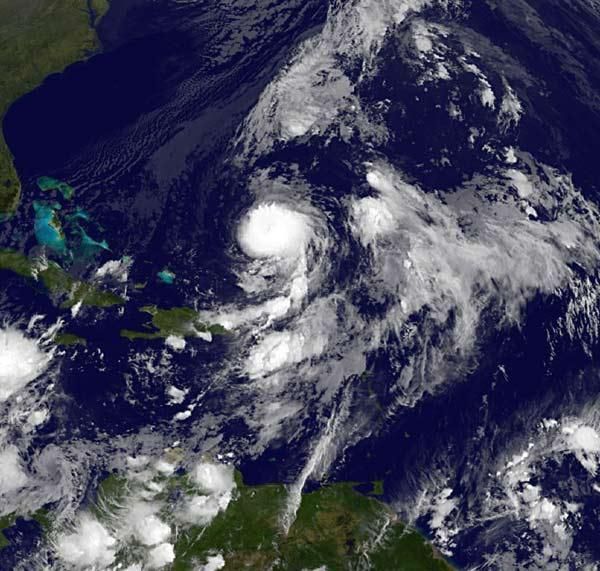
Otto Becomes Hurricane Number Eight

At 11 a.m. ET today (Oct. 8), former Subtropical Storm Otto became Hurricane Otto, the eighth hurricane of the 2010 hurricane season.
Otto had maximum sustained winds near 75 mph (121 kph), and the National Hurricane Center in Miami, Fla., noted that some strengthening is possible before it weakens on Saturday.
Otto is located about 445 miles (716 kilometers) south of Bermuda and is moving east-northeast near 17 mph (27 kph).
Along with being the eighth hurricane of the 2010 season, Otto is the 15th named storm. Named storms include tropical storms and hurricanes.
Otto began a little differently than other storms this year, forming as a subtropical cyclone. Subtropical cyclones differ from tropical cyclones because they have broad wind patterns and their maximum sustained winds are located farther from the center of the system than tropical cyclones. (Tropical cyclone is the generic name for tropical storms, hurricanes and typhoons.)
Subtropical storms also usually have colder temperatures in upper levels of the atmosphere than tropical cyclones (which have very warm cores). Finally, sea surface temperatures required for the formation of sub-tropical storms are about 5 degrees Fahrenheit (2.8 degrees Celsius) cooler than needed for a tropical cyclone to develop.
Otto is not expected to threaten land over the weekend, though some Caribbean islands may still experience heavy rainfall today.
Sign up for the Live Science daily newsletter now
Get the world’s most fascinating discoveries delivered straight to your inbox.
The 2010 hurricane season was predicted to be a busier-than-average one, with 17 named storms, 10 of which were expected to become hurricanes. An average hurricane season, in comparison, has 11 tropical storms with six of them becoming hurricanes.
Hurricane season begins on June 1 and ends on Nov. 30 each year. The busiest part of the season is typically late August through early October, when ocean waters are at their warmest, providing the fuel that drives these ferocious spinning storms.












